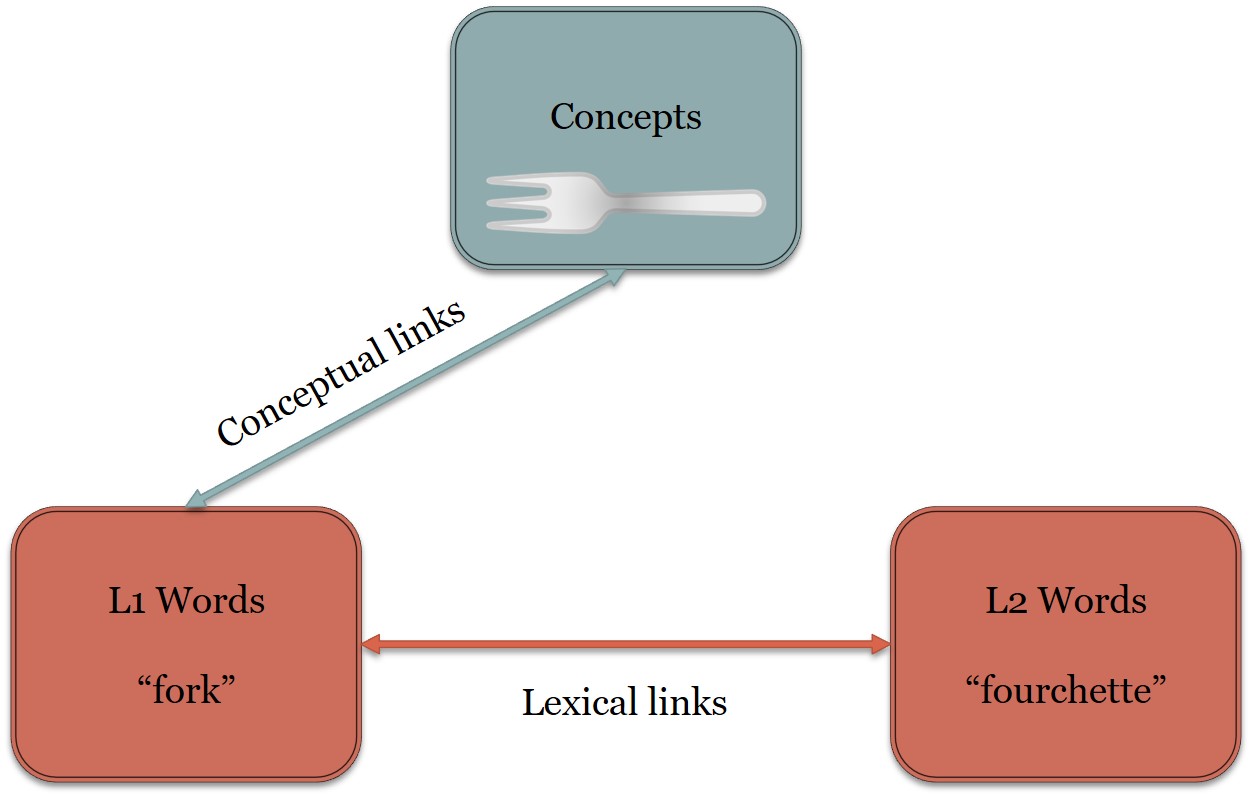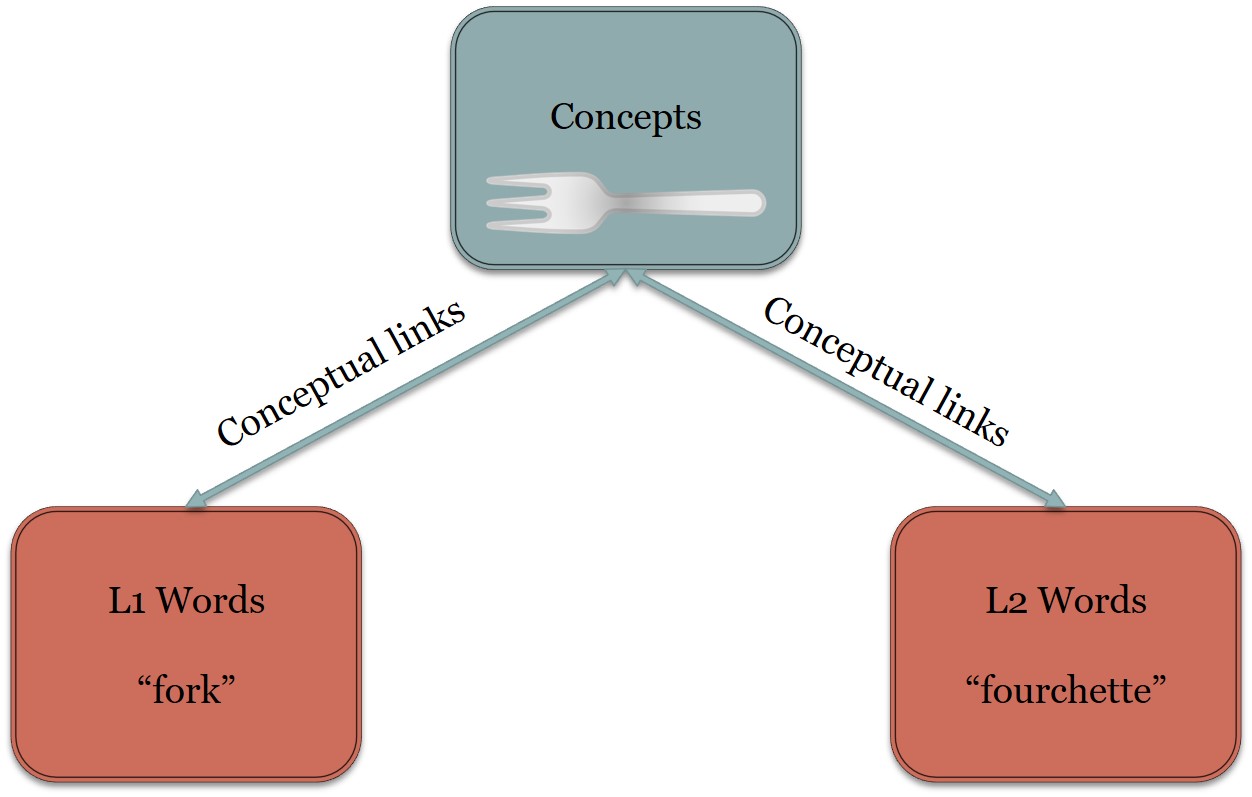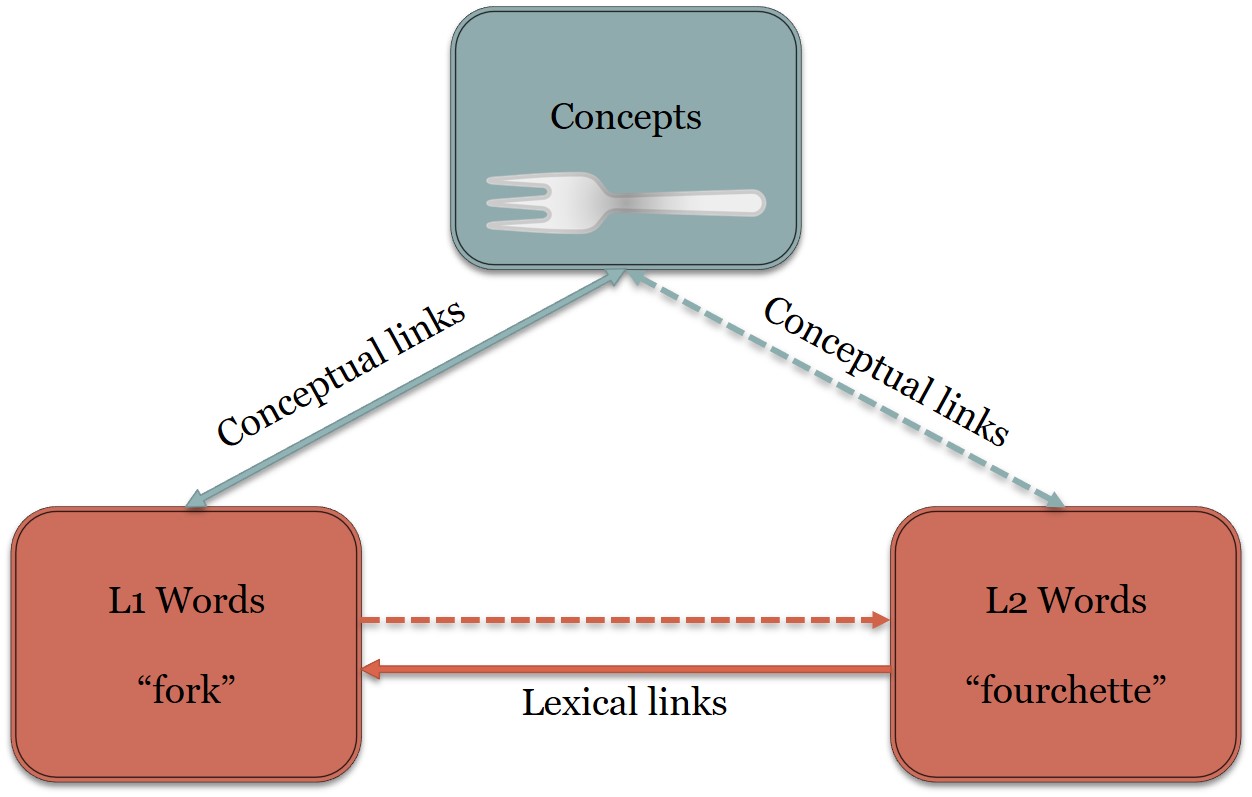6.2 Bilingual Language Processing
Dinesh Ramoo
The issue of how we switch between two languages is an interesting topic for bilingual research. Kroll and Stewart (1994) proposed a model of asymmetric translation between L1 and L2. The Word Association Model (see Figure 6.1) has the L1 word directly associated with its L2 equivalent. In order to access the concept of a word, L2 words must first activate their L1 equivalent.

In contrast to this, the Concept Mediation Model (see Figure 6.2) has words in L1 and L2 directly associated with the concepts. However, there are no direct links between the words in L1 and L2. Potter et al. (1984) tested these models by comparing the time it took bilinguals to translate between L1 and L2 and L2 picture-naming. The assumption is that picture naming requires conceptual processing. The Word Association Model predicts that picture-naming in L2 should take longer than translation as it has two steps (link to L1 and then link to the concept). The Concept Mediation Model on the other hand predicts that both tasks should take more or less the same amount of time as the concept is linked to the words in L1 and L2. The results favoured the Concept Mediation Model.

Kroll and Curley (1988) and Chen and Leung (1989) replicated the results of Potter et al. (1984) using participants of lower proficiency in L2. They found that learners at an earlier stage of acquisition were quicker in translation from L1 to L2 than L2 picture-naming. This supported the Word Association Model. While Kroll and Curley (1988) and Chen and Leung (1989) did replicate the findings of Potter et al. (1984) for highly proficient bilinguals, they did identify a transition phase which relied on translating between L1 and L2 with possible mediation of the concept. Therefore, Kroll and Stewart (1994) proposed the Revised Hierarchical Model (see Figure 6.3) which integrated the connections from the Word Association Model and the Concept Mediation Model.

The Revised Hierarchical Model make two assumptions:
- L1 words are more strongly connected to concepts than L2 words, and
- L2 words are more strongly connected to their translations in L1 than vice versa.
As learners become more proficient in L2, they begin to develop the ability to process L2 words directly. However, the connections for L1 remain stronger than for L2.
Media Attributions
- Figure 6.1 Word Association Model by Dinesh Ramoo, the author, is licensed under a CC BY 4.0 licence.
- Figure 6.2 Concept Mediation Model by Dinesh Ramoo, the author, is licensed under a CC BY 4.0 licence.
- Figure 6.3 The Revised Hierarchical Model by Dinesh Ramoo, the author, is licensed under a CC BY 4.0 licence.

